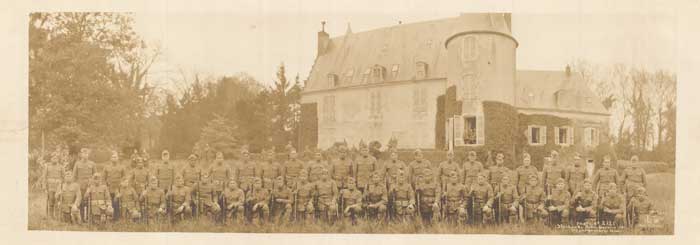Sequoyah National Research Center to create website on American Indians in World War I
The UA Little Rock Sequoyah National Research Center is partnering with the U.S. World War I Centennial Commission to commemorate the approximately 12,000 American Indians who served in the country’s military during World War I.
Dr. Daniel Littlefield, director of Sequoyah National Research Center, and Erin Fehr, archivist, are working to create a website that will capture all aspects of American Indians’ involvement in the World War I effort.
“In the past, we have done so much work with American Indians in the military, with the World War I project, and we feel like it is so important because no one else has done this, and we feel like it is needed,” Fehr said. “We have reached out and met individuals who have told us stories about their families, and it is very important for us and their family members to be able to tell those stories and have them remembered.”
When the U.S. entered World War I on April 6, 1917, American Indians from across the country volunteered in large numbers to protect and defend their homeland.
The U.S. World War I Centennial Commission (WWICC) was created by Congress in 2013 to commemorate the centennial of World War I over the next five years. The commission was created to develop educational programs, organize activities, establish a National World War I Memorial in Washington, D.C., and serve as a clearinghouse for information related to the commemoration. To that end, WWICC has partnered with local, state, and regional entities to create a website dedicated to World War I.
Commission members approached Sequoyah National Research Center about creating a website about Native Americans who served in World War I after seeing the center’s fall 2017 exhibit, “Untold Stories: American Indian Code Talkers of World War I.”
During World War I, Americans Indians transmitted military messages between the U.S. and its allies in their native languages. The Germans, who were adept at code breaking, could not decode the messages, as they were unfamiliar with American Indians languages. Known as code talkers, Americans Indians served an important role in protecting military messages, and the effort was expanded significantly during World War II and included additional tribes. In fact, Elijah Horner, an Arkansas native from Mena, recruited members from the Choctaw Nation to serve as code talkers during World War I.
As part of the exhibit, Sequoyah started a database, “Modern Warriors of World War I,” to identify the 12,000 American Indians who served in World War I. They collected more than 3,000 names and have been actively searching to identify the additional American Indians who served in the military during World War I and their tribal affiliations.
Courtney Peyketewa, a Seminole tribal member and graduate student at the University of Central Oklahoma who was a summer intern at Sequoyah, continued this work by contacting tribes regarding their World War I service members. She made great progress and received several information-filled emails with names from various tribes. Additionally, she kept track of tribes that have created veterans’ memorials. Sequoyah’s new graduate assistant, Will Lusk, a graduate student in interdisciplinary studies, is continuing this work.
In addition to the database of American Indian World War I veterans, the website will also cover other examples of how American Indians were involved in the war effort.
“In addition to those who actively served in the military, you had American Indian women who served in the Army Nurse Corps. We’ve only identified eight so far. Even though there were so few, we still feel like that is a significant involvement,” Fehr said. “There were also many who served on the homefront volunteering with American Red Cross, growing victory gardens, investing in bonds. We want to give a well-rounded view of the war effort for Native Americans. We have also found some of the letters that were written by the men, so people can read in their own words how the men felt. It’s a huge project, but we feel like it was well worth doing.”
The website will go live on the U.S. World War I Centennial Commission’s website, wwwicc.org, this fall.
In the upper right photo, this panoramic photo depicts the 36th Division of the 142nd Infantry Company E, who served in France during World War I. The company was made almost entirely of American Indian soldiers.
